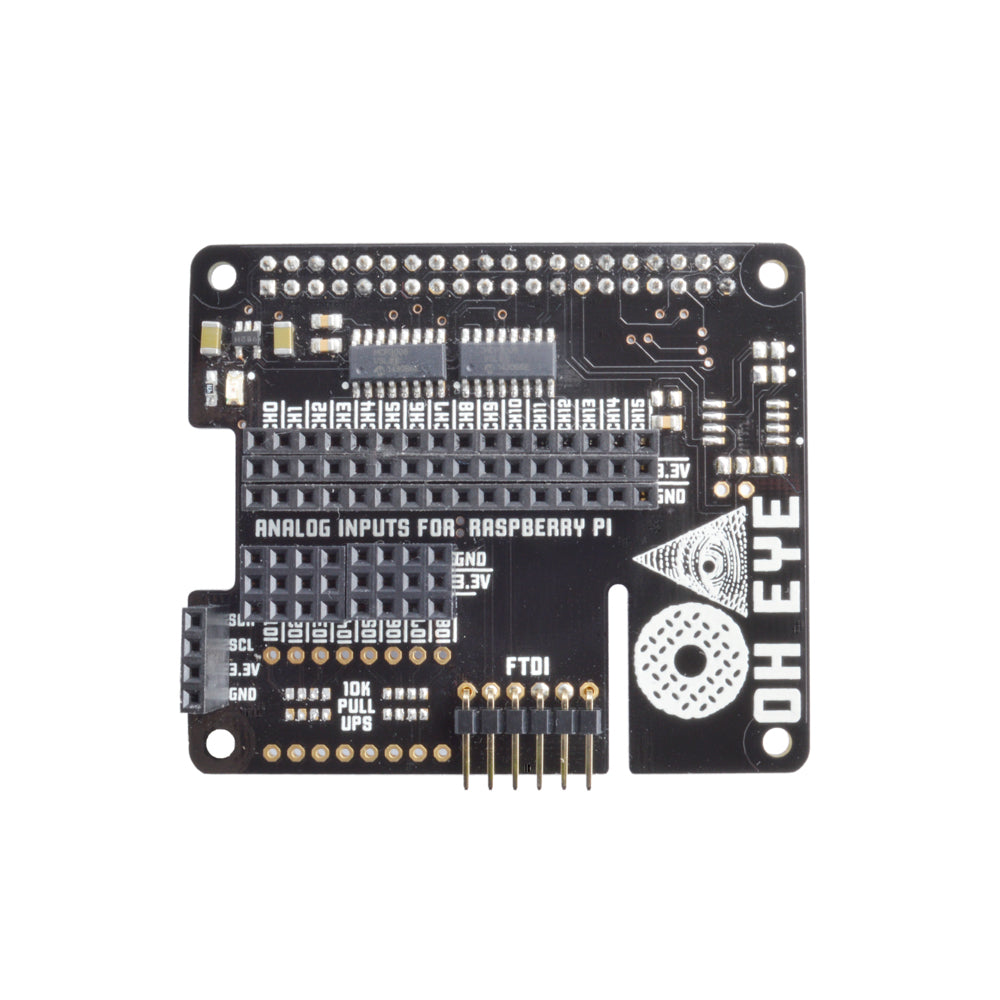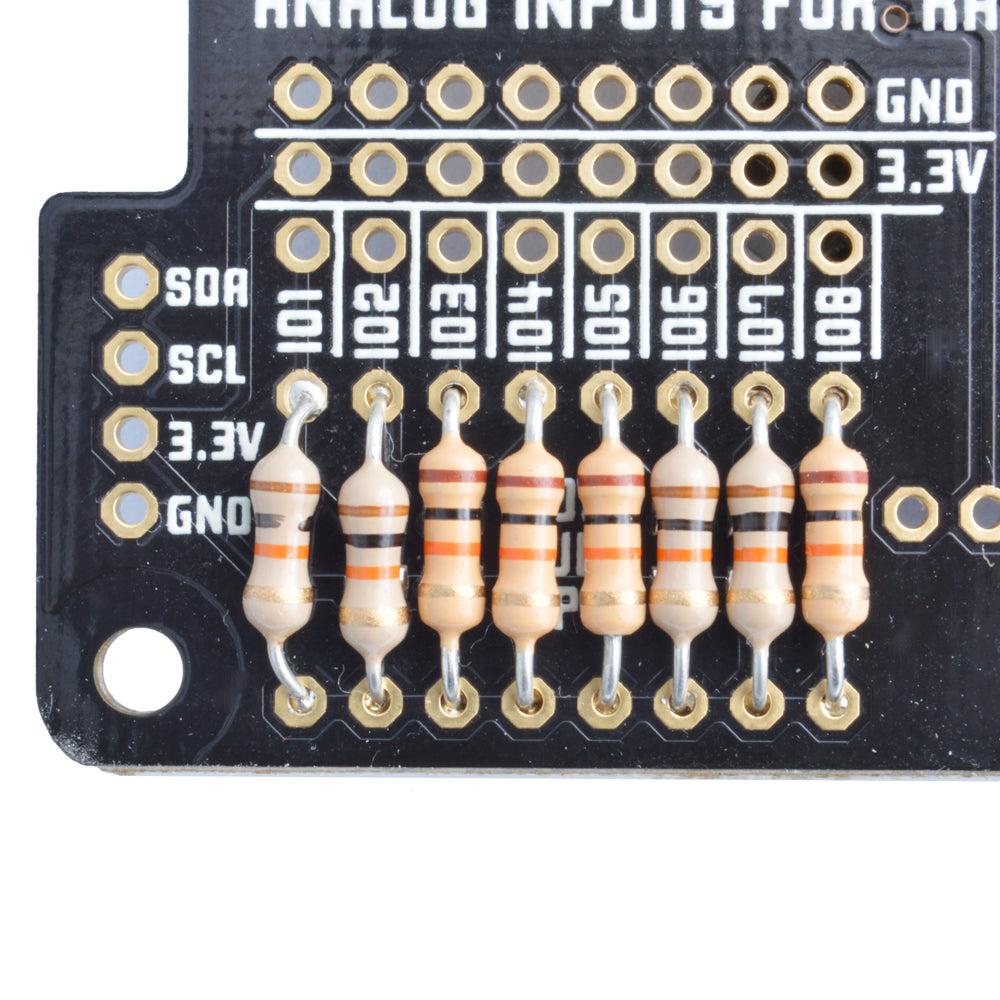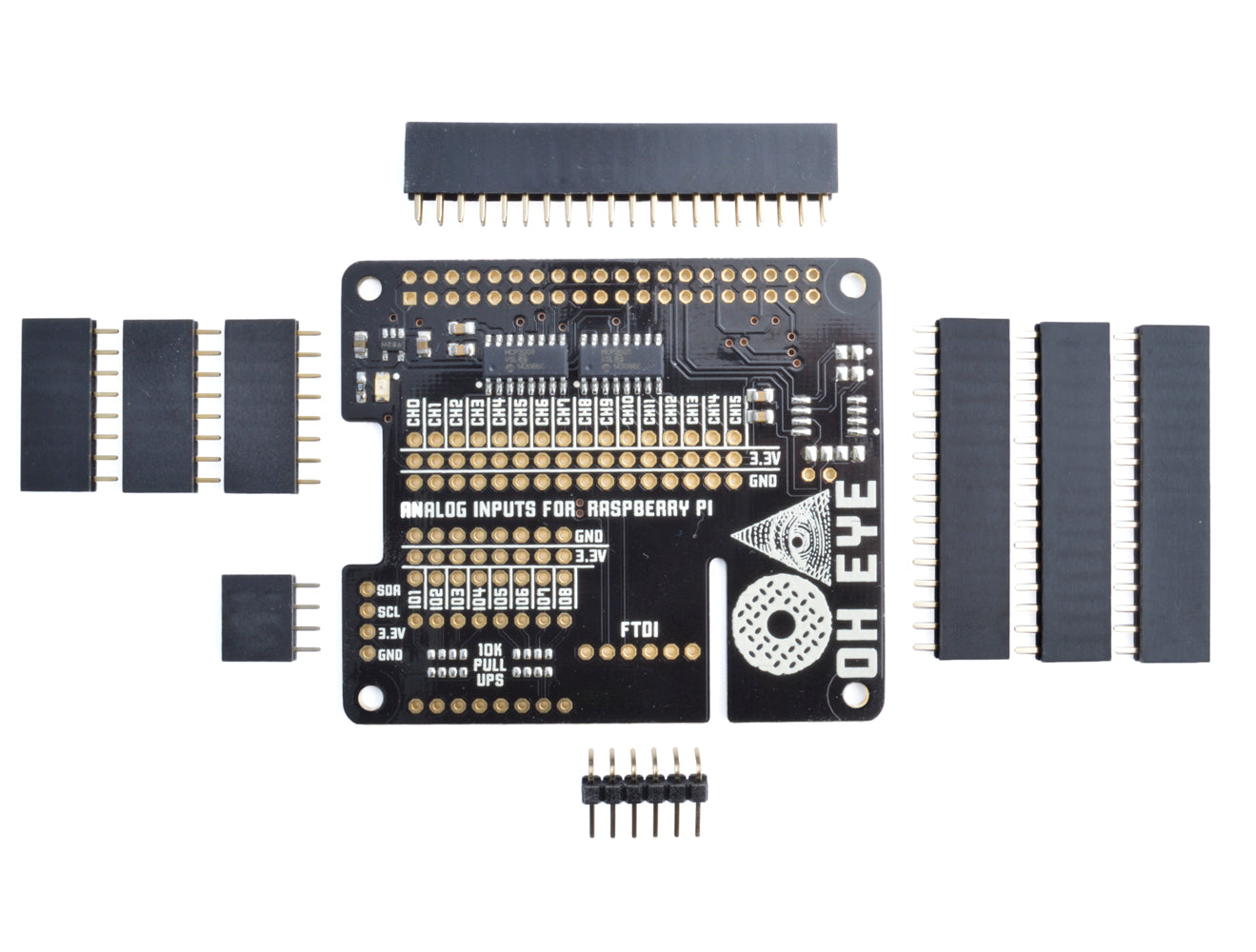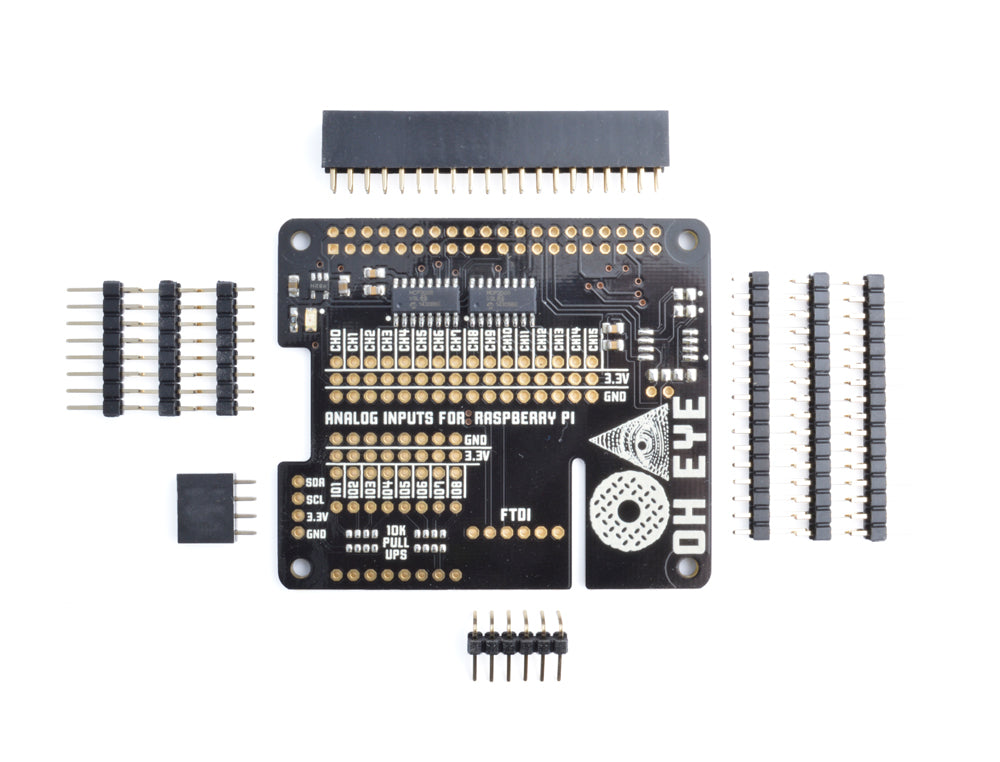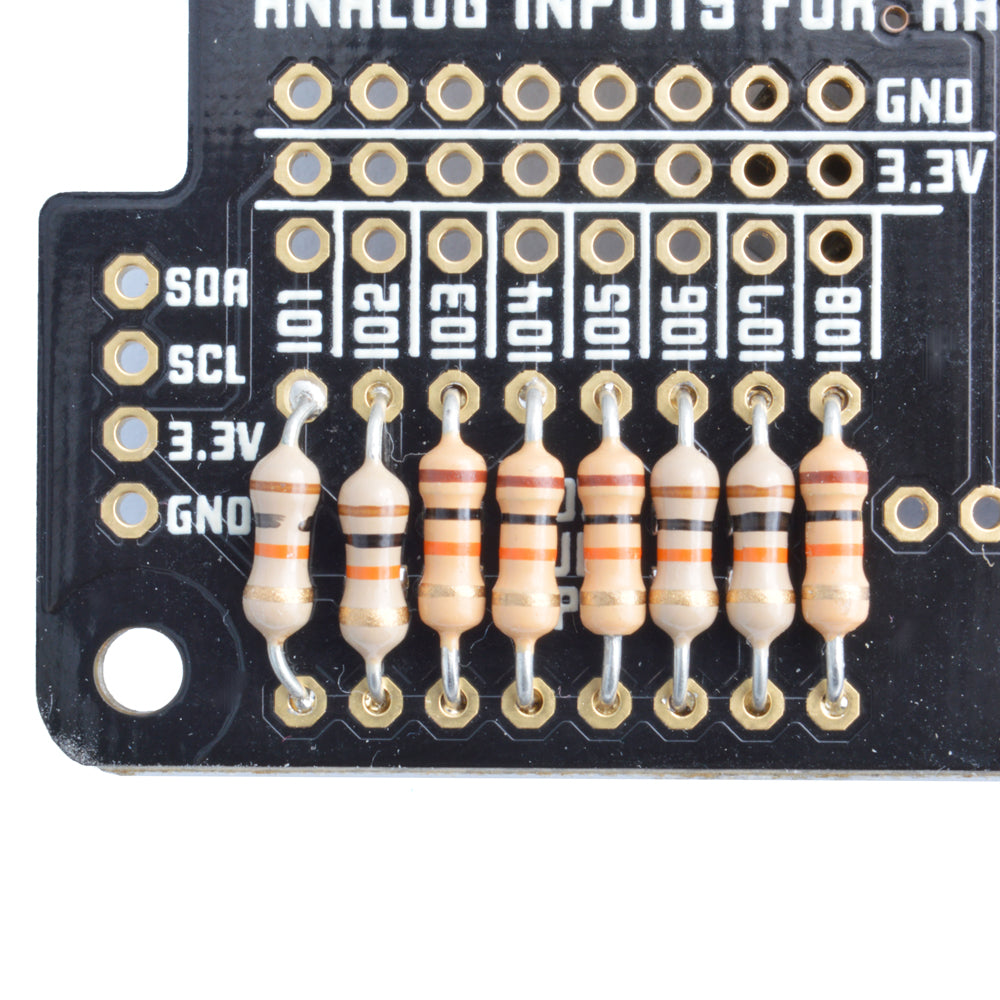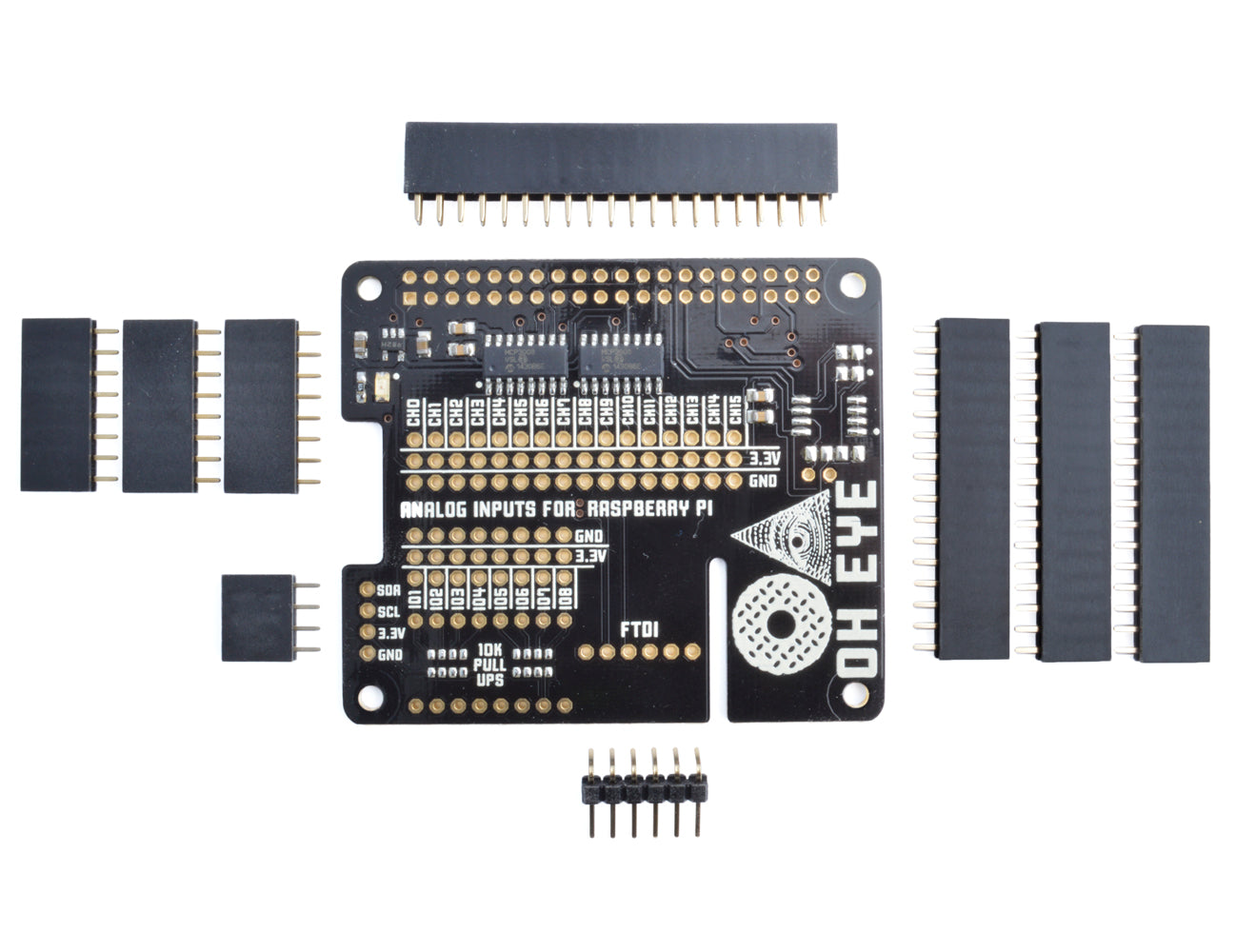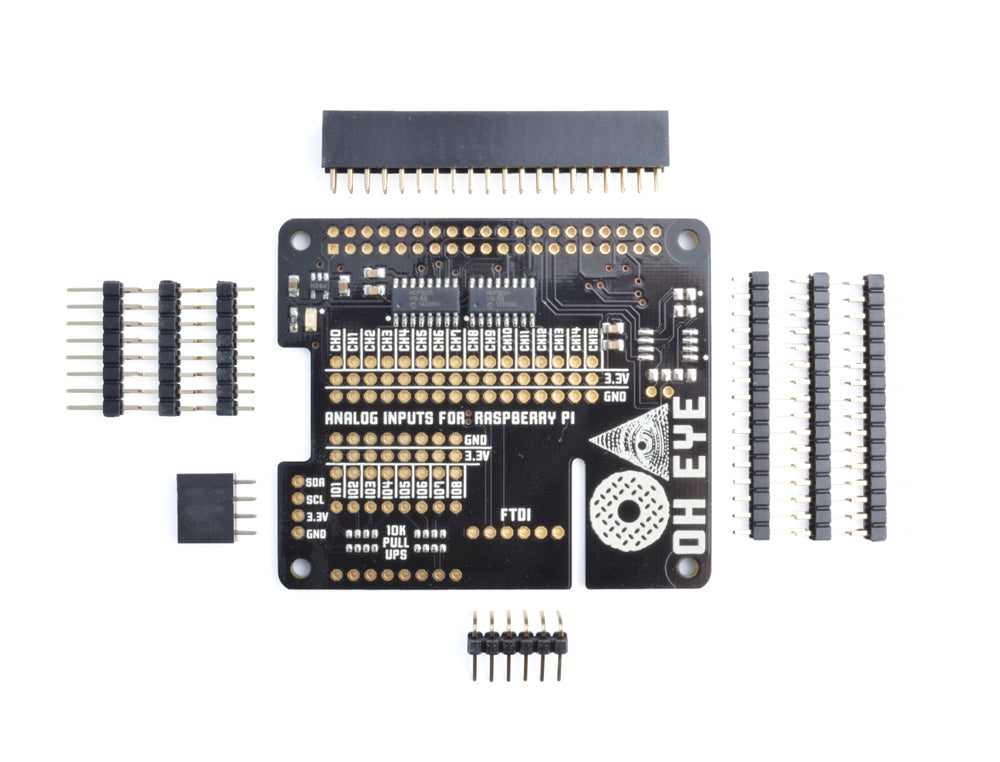Oh Eye: 16 Analog Inputs for Raspberry Pi
SKU: RP0010Couldn't load pickup availability
Share
It isn't an IO Board, it's an "Oh Eye" board! Sixteen 10-bit analog inputs and 8 digital inputs/outputs pulled out. It makes it easier to use the Pi as part of a special purpose appliance or musical instrument. The analog inputs are via two MCP3008 chips connected to the Raspberry Pi’s hardware SPI interface. The use of this ADC chip with the Pi is common and well documented. You may ask: "isn't 16 channels of analog input a little overkill?" To which we would answer: yes it is, except when it isn't.
A Mess of Inputs
Once you've done a number of projects with a lot of potentiometers or analog sensors you'll appreciate the handiness of the convenience headers. When you're using analog inputs you are always running three wires to everything: power, ground, and signal.

The convenience header makes it easy to use three-wire servo cables. With these cables you get a nice solid connection that isn't going to break at the joint over time, and you can disconnect your panel of pots when you need to. No more stripping dozens of connections (although you can still do that if you like).
A Few More Features
If you're hooking up buttons or switches to the Pi you'll always need a connection to ground (or power) as well, so the Oh Eye pulls out 8 digital pins with a ground rail as well. On the digital inputs, you almost always need a pullup resistor. The Raspberry Pi has internal pullups but they are weak (in the 50k range) and may be susceptible to noise. If you need a smaller value, the Oh Eye has neat pads and holes for adding through hole, SMT or a network of resistors for all your pullup needs.

The Oh Eye board comes with the Raspberry Pi connection header separately.
Resources:
